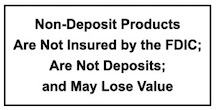In the dynamic landscape of construction finance, lenders constantly grapple with two interconnected variables – construction costs and the accompanying financing challenges. This symbiotic relationship frequently drives the trends, policies, and risk management approaches in construction lending.
Construction costs, notoriously variable, are influenced by a myriad of factors. The price of raw materials, labor costs, regulatory environment, land prices, and even the weather can significantly impact the total cost of a construction project. Over the past decade, we’ve seen volatile swings in material costs due to geopolitical tensions, trade policies, and environmental disasters. This unpredictable nature of costs creates an intricate risk matrix for lenders who must navigate these uncertainties to finance construction projects effectively.

The overarching objective for the lender is to ensure that the borrower can complete the project on budget and service their loan. To manage the cost-related risks, lenders often employ a range of strategies such as comprehensive upfront due diligence, use of loan covenants, regular draw schedules, and independent inspections.
One of the main tools at the lender’s disposal is the Loan-to-Cost (LTC) ratio. This ratio, the loan amount as a percentage of the total project cost, is a measure of risk. The lower the LTC, the more the borrower has invested in the project, reducing the lender’s risk exposure. A lower LTC can make the loan more appealing to the lender despite the rising cost of construction, as it gives them a cushion against cost overruns or changes in the project’s value.
Another pivotal strategy is the close monitoring of the project. This includes scheduled progress reports, financial reviews, and site visits, which help lenders track the project’s health and identify potential cost overruns early. This approach provides lenders with an opportunity to intervene before the borrower defaults, by potentially restructuring the loan or assisting the borrower in identifying cost-saving opportunities.
In the rapidly evolving world of construction lending, it’s crucial for lenders to stay abreast of market trends and cost fluctuations. The ability to adapt underwriting policies and risk management strategies in response to these changes is key to maintaining healthy loan portfolios.
Indeed, the dual challenges of construction costs and financing are not easy to navigate, but they offer lenders an opportunity. By understanding these challenges and proactively managing them, lenders can help drive successful construction projects, ultimately contributing to economic growth and community development.

